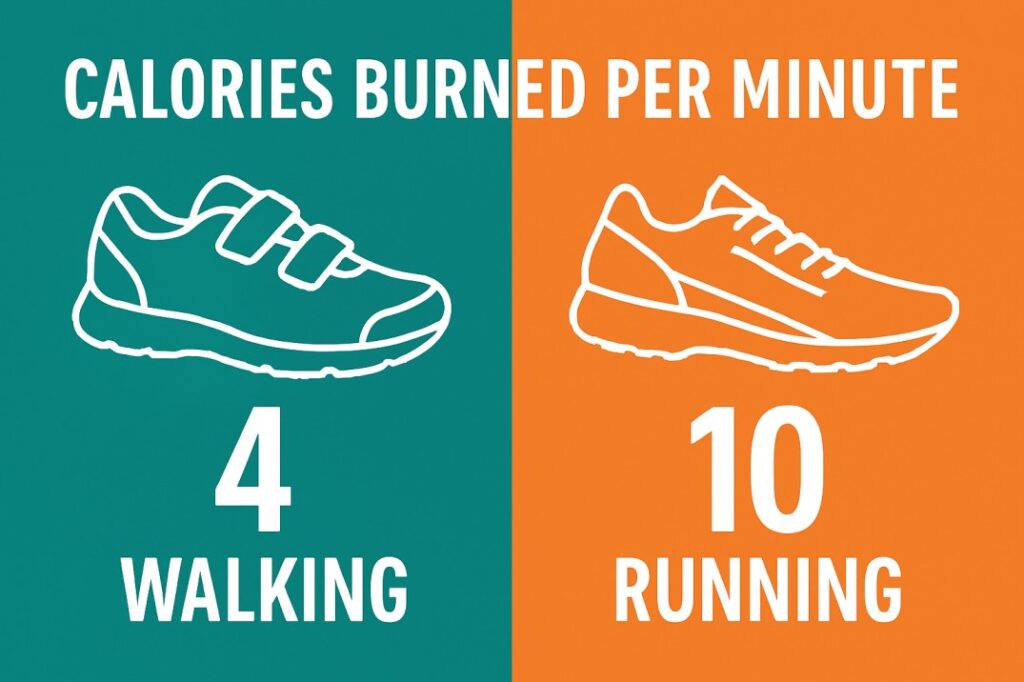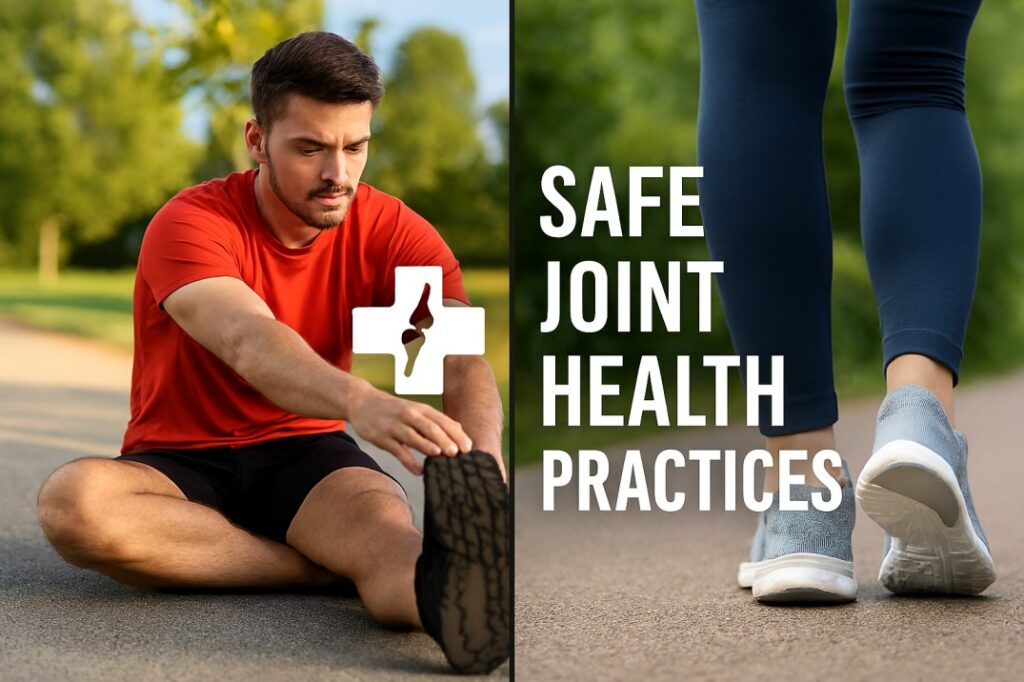
Walking vs Running featured comparison
Walking vs Running — compare calories, heart health, injury risk, and mental benefits to choose which exercise fits your goals and lifestyle.
Walking vs Running: How to Pick the Right Workout
Exercise is simple. Yet questions often follow. Two of the most common choices are walking and running. Both move your body. Both improve your health. But which is better? The honest answer: it depends. In this article, you will learn the facts. Then you can pick what fits your goals and life.
Why compare walking vs running?
People pick activities for many reasons. Time, joints, goals, and motivation matter. So do safety and pleasure. Walking is low-impact. Running is higher intensity. Both burn calories. Both have lower disease risk. You should know the trade-offs. This helps you choose smartly.
Benefits: Walking vs Running for heart and longevity

Both walking and running help your heart. Research shows running is linked with lower all-cause and cardiovascular death compared with not running. Yet walking brings big benefits too when you reach a similar total energy use. In other words, intensity and total weekly activity both matter. PMC+1
Practical point: if you can only walk, hit the recommended weekly activity target, and you’ll still get strong heart benefits. The CDC and WHO recommend at least 150 minutes of moderate activity (like brisk walking) or 75 minutes of vigorous activity (like running) per week. CDC, World Health Organization
Calories and weight loss: running vs walking

Running burns more calories per minute. So you burn more in less time. For many people, that makes running attractive for weight goals. However, you can match the same calorie burn by walking longer or walking uphill. Thus, total energy spent over time matters more than whether you ran or walked. Cleveland Clinic, PMC
Practical tip: if time is limited, run. If you prefer low-impact and long sessions, brisk walking works well.
Joints and injury risk: walking vs running

Many worry that running ruins the knees. But current evidence does not support that for healthy recreational runners. Large reviews show that typical running does not increase long-term knee arthritis risk and may even be protective in some cases. Still, running raises short-term injury risk (sprains, strains, overuse injuries) compared with walking. Walking is gentler and safer for beginners and people with joint pain. PMC+1
Suggestion: If you have knee pain or prior joint problems, start walking. Then, with guidance, you can try low-impact strengthening and careful progression before increasing running.
Mental health and brain benefits: walking vs running

Both walking and running help the mood and the brain. Walking outside improves mood and lowers depression symptoms. Likewise, aerobic exercise such as running improves anxiety, memory, and cognitive function. Even small bouts of walking can boost attention and processing speed. So pick the activity you will do consistently — that choice wins mentally. PMC, UCLA Health
Tip: outdoor movement gives extra benefits. Sunlight, fresh air, and green spaces amplify mood gains.
Strength, bone health, and mobility
Running is more mechanically demanding. It can improve bone density and muscle power more than walking. In contrast, walking improves balance and mobility, especially for older adults. Both should be combined with strength training two times a week for the best results.
If your goal is stronger bones and speed, running (plus strength work) helps. If your goal is steady mobility, daily walking is excellent.
Practical comparisons: time, accessibility, and adherence
- Time: Running gives more benefits in less time.
- Accessibility: Walking needs no gear and is easier for most people to start.
- Adherence: People stick to walking longer because it’s easier and less painful.
- Cost: Both are low-cost; shoes matter more for runners.
In short, running is efficient. Walking is sustainable. Choose what fits your schedule and body.
How to choose: a simple decision flow
- Want quick calorie burn, and you have no joint issues? Consider running.
- Have joint pain, are new to exercise, or prefer low risk? Choose walking.
- Short on time but want heart benefits? Run shorter sessions to match guidelines.
- Enjoy social or outdoor time? Walk with friends or family.
- Unsure? Combine both: run two short sessions weekly and walk most days.
Training tips: make each activity safer and more effective
- Warm up. Do dynamic stretches for 5–10 minutes.
- Progress slowly. Increase time or speed by no more than ~10% per week.
- Wear proper shoes. Replace them when worn out.
- Mix strength work. Add two sessions weekly to prevent injury.
- Rest. Recovery reduces injury risk and boosts gains.
Walking vs Running: Sample Weekly Plans
Beginner walking plan:
- 5 days × 30 minutes brisk walk = 150 minutes weekly. Good for heart health.
Beginner run/walk plan:
- 3 days: 20–30 minutes with an interval run/walk (e.g., 2 min run, 3 min walk).
- 2 days: 30 minutes brisk walk. This reaches a good mix of intensity and volume.
Advanced runner:
- 3–4 runs per week (including one tempo or interval session).
- 2 strength sessions.
- Several easy walk days for recovery.
Frequently Asked Questions (FAQ)
Q1: Which burns more calories — walking or running?
A: Running burns more calories per minute. However, walking longer or on hills can equalize total energy burned. Cleveland Clinic
Q2: Will running damage my knees?
A: Not usually. Evidence shows recreational running does not increase long-term knee arthritis risk in healthy people. But running does raise short-term injury risk. Start slowly if you’re new. PMC+1
Q3: Is walking enough exercise?
A: Yes. Brisk walking that reaches 150 minutes a week meets major health guidelines and protects your heart, mood, and weight. CDC
Q4: Can I combine both walking and running?
A: Absolutely. Many people follow a hybrid plan. Walk on recovery days and run on intense days. This reduces injury risk and keeps you consistent.
Q5: Which is better for mental health?
A: Both help. Studies find walking reduces depression and anxiety. Running improves mood and cognition, too. The best choice is what you enjoy and will keep doing. PMC, UCLA Health
This article is for general informational purposes only. It does not replace professional medical advice. Before starting a new exercise plan, especially if you have chronic conditions or recent injuries, consult your physician or a qualified health professional.
Want a simple plan built around your current fitness and goals? Tell me your age, current activity level, and any joint issues. I’ll draft a 4-week walk/run plan that’s safe and realistic for you.
If you found these tips helpful, share this article with friends and family. For more science-backed health insights, explore our latest blogs on Nowspress.







